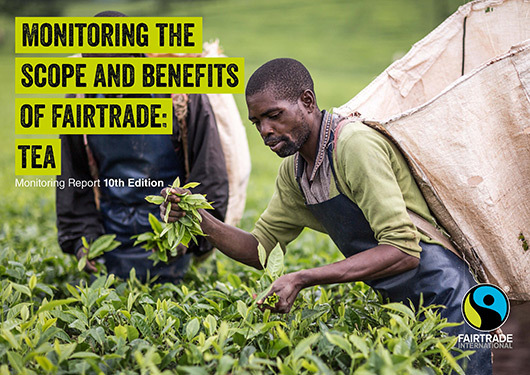Monitoring the scope and benefits of Fairtrade: Tea – Monitoring report, 10th Edition
Published: 20 Aug 2019

Tea is the second most popular beverage in the world, surpassed only by water. Most tea is produced on large estates employing hundreds or thousands of workers in East Africa and Southeast Asia. But there are also a number of small tea producers organized through co-operatives and associations who sell their freshly-plucked green leaf to plantations or tea factories for processing into black tea.
Fairtrade has been working in the tea sector for over two decades. The very first Fairtrade certified tea was launched in the UK back in 1994. Today, more than 390,000 farmers and workers spread across eleven countries are involved in Fairtrade tea production. They represent the highest number of workers within the Fairtrade system – a massive 45 percent.
Fairtrade Standards for tea include origin-specific Fairtrade Minimum Prices which act as a safety net to protect producers against an unpredictable market, as well as the payment of an additional Fairtrade Premium of US$0.50 per kilogramme of black tea, which producers can invest in projects of their choice. In the case of instant teas, Fairtrade applies a different Premium mechanism – a fixed ten percent of the commercial price is added on top – in order to attract new brands and increase market access for those teas.
The continued overall decline in black tea sales – especially in traditional tea markets such as the UK – has translated into lower sales volumes of Fairtrade tea, with producers only able to sell a small fraction of their crop on Fairtrade terms. The drop in Fairtrade sales from 2016 to 2017 also reflects the decision by UK retailer Sainsbury’s to use its own-brand tea. Still, in 2017, Fairtrade tea sales generated nearly €5.3 million in Fairtrade Premium for farmers and workers.